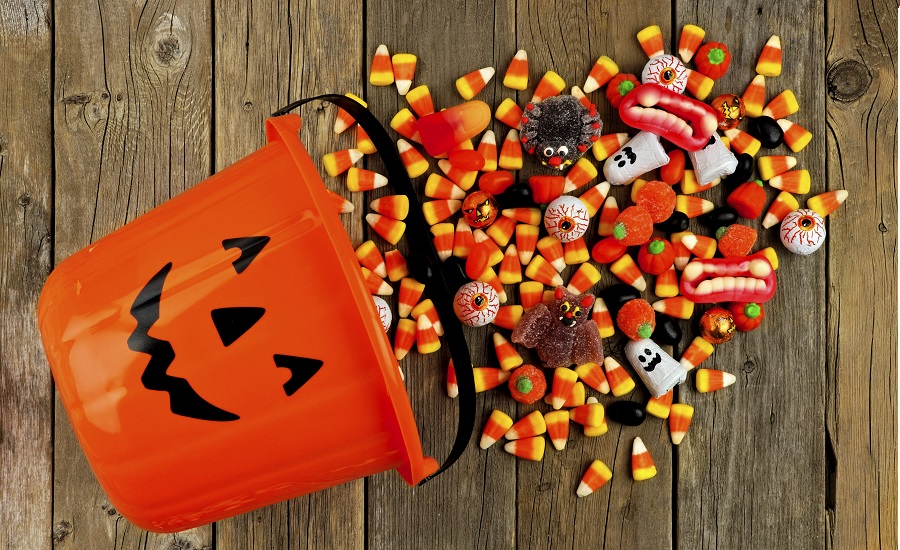
Each neighborhood is different when it comes to the number of trick-or-treaters and how much candy they need to buy for the holiday. Some very religious areas are less likely to have large numbers of trick-or-treaters, and other communities prefer to host trunk-or-treat events, school carnivals, or block parties instead of door-to-door candy collecting.
So how do you know how many bags of candy to buy for this festive, sugar-laden holiday? The short answer: there’s no one-size-fits-all rule. But you can make an educated guess if you think about your neighborhood, your candy choice, and past experience.
How Many Children Are in Your Neighborhood?
The most obvious factor is the size and age makeup of your community.
- Sparse neighborhoods – If you live in an area with few children, large lots, or houses spread far apart, you may not get many visitors. Kids are savvy — they often head to denser areas where the “candy per effort ratio” is higher.
- Suburban subdivisions – Cul-de-sacs and tight clusters of homes often attract droves of costumed visitors. Families may even drive in from other neighborhoods if yours is known for being generous.
- Apartment complexes or condos – These can be hit or miss. Some complexes encourage organized trick-or-treating, while others discourage it. When they do participate, expect a quick rush since kids can knock on dozens of doors in a short time.
Tip: If you’re new to your neighborhood, ask your neighbors what last year looked like. They’ll usually have a ballpark figure.
What Are You Giving Out?
Candy type makes a difference in both cost and quantity.
Non-candy treats – Stickers, glow sticks, or small toys can be fun alternatives, but may not appeal to every child. If you mix them with candy, you might extend your supply.
Full-size candy bars – Memorable, but expensive. If you go this route, expect kids to spread the word quickly. You may see repeat visitors or attract extra traffic.
Fun-size bags – The most common and cost-effective option. One per kid is usually enough.
Miniatures or singles – Jolly Ranchers, Kisses, and small Reese’s Cups often need to be given in groups of two or three to feel fair. Avoid handfuls unless you’re prepared for a fast-emptying bowl.
Isn’t There a Formula?
Apartment Therapy suggests a clever, if imperfect, formula to calculate how much candy to buy. It considers three main factors:
- Estimated number of kids in the neighborhood
- Quality of decorations (low, medium, high)
- Weather conditions (poor, average, excellent)
The formula looks like this:

The idea is that better decorations and nicer weather bring more kids to your door. It’s playful math — not perfect science — but it can help if you’re starting with no frame of reference.
Let’s Test the Formula
- Small neighborhood: 30 kids, 25 servings per bag.
- 30 ÷ 25 = 1.2
- Decorations rated a 4, weather a 2 → total factor = 6
- 1.2 × 6 = 7.2 ÷ 2 = ~4 bags
- Large neighborhood: 150 kids, same bag size, decorations, and weather average.
- 150 ÷ 25 = 6
- Factor = 6
- 6 × 6 = 36 ÷ 2 = ~18 bags
Is it perfect? No. Kids don’t always follow formulas. But it gives you a starting number.
Other Factors to Consider
- Day of the week – Weeknight Halloweens tend to end earlier; weekend Halloweens may bring heavier crowds.
- Local events – If your town is hosting a parade, pumpkin walk, or trunk-or-treat, you may see fewer visitors.
- Word of mouth – Some neighborhoods get reputations as “the place to go.” If yours is one of them, double your stash.
- Your own routine – Will you be home all night, or leaving early? If you plan to close shop before 9 p.m., you can buy less.
What If You Run Out?
It happens! If you run out of candy:
- Turn off your porch light — the universal “we’re done” signal.
- Keep a small “backup stash” of pretzels, fruit snacks, or non-Halloween treats to hand out in a pinch.
- If you’re really short, consider giving one piece per child instead of a handful as the night goes on.
Final Thoughts
There’s no single way to predict how many bags of candy you’ll need for Halloween. A formula might help, but your best guide is your own neighborhood’s history and habits. If you overbuy, you’ll have leftovers (never the worst thing). If you underbuy, it’s still fine — most kids will understand when the candy runs out.
The most important thing is to keep it fun, safe, and neighborly. Whether you hand out full-size candy bars or a few fun-size pieces, the memory kids will carry is the excitement of the night.
Happy Haunting — and may your candy bowl last until the final trick-or-treater!
[1] https://www.apartmenttherapy.com/how-much-halloween-candy-should-i-buy-237187
